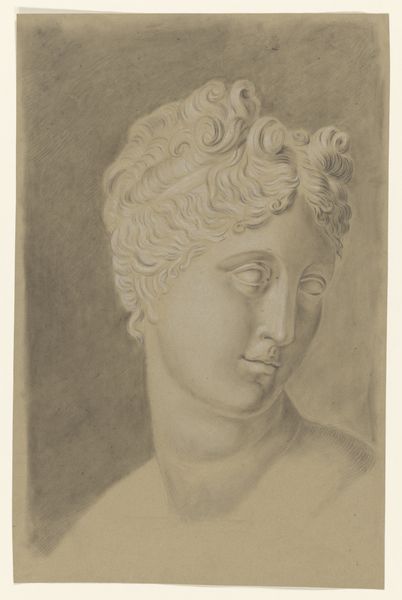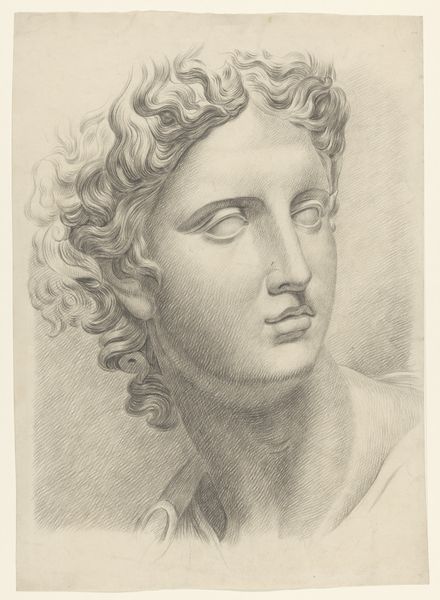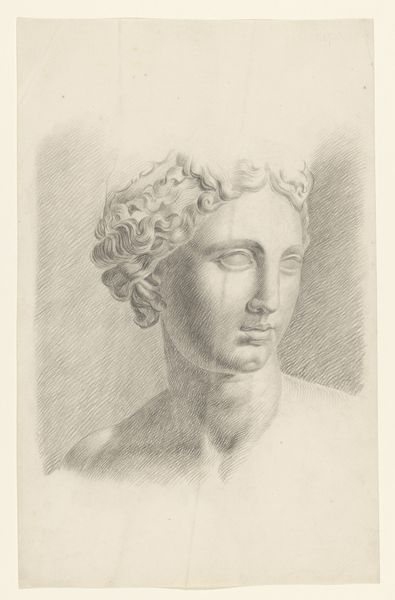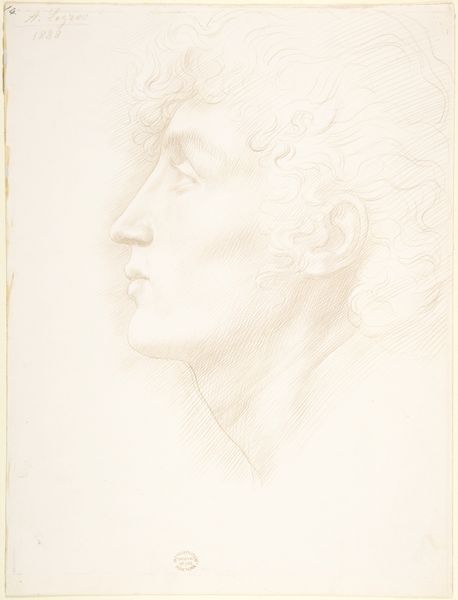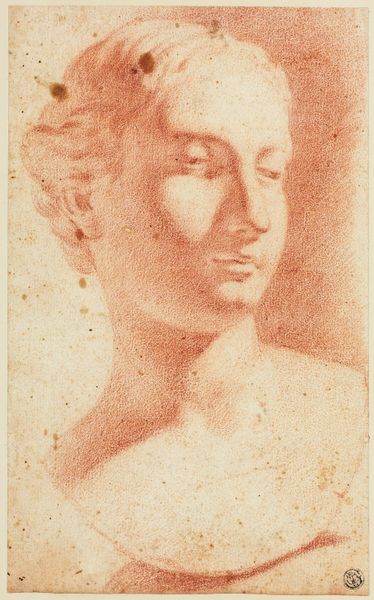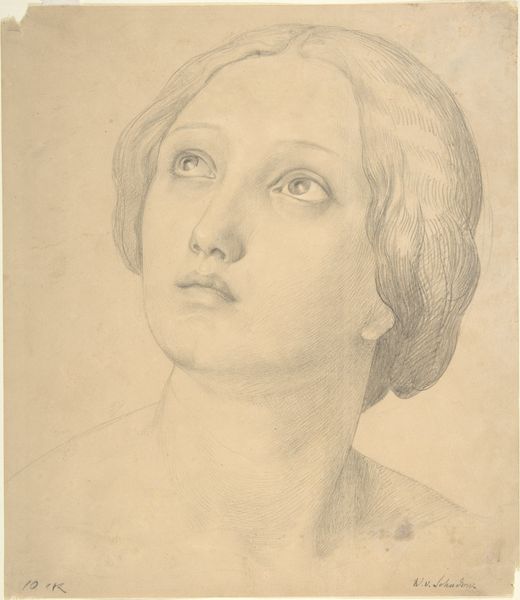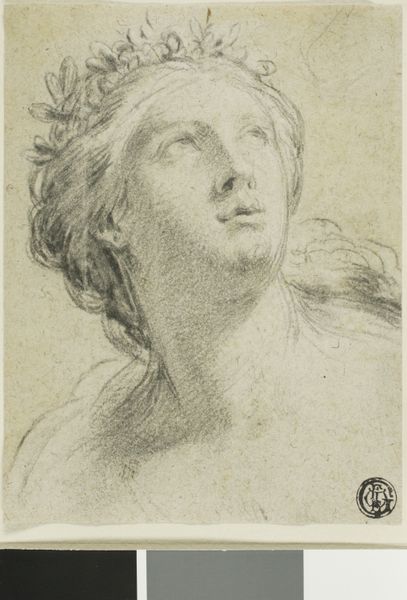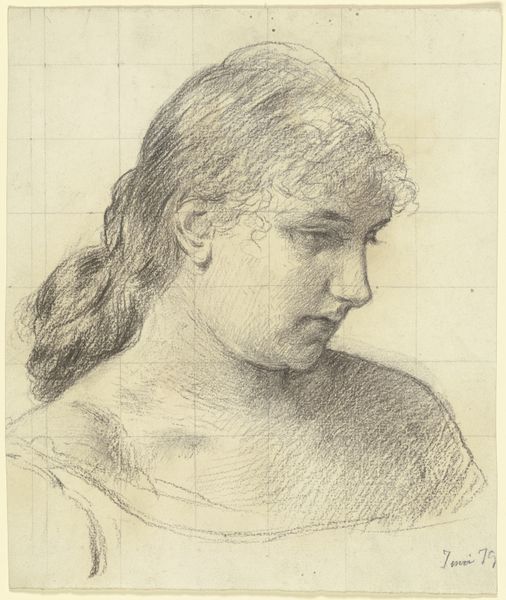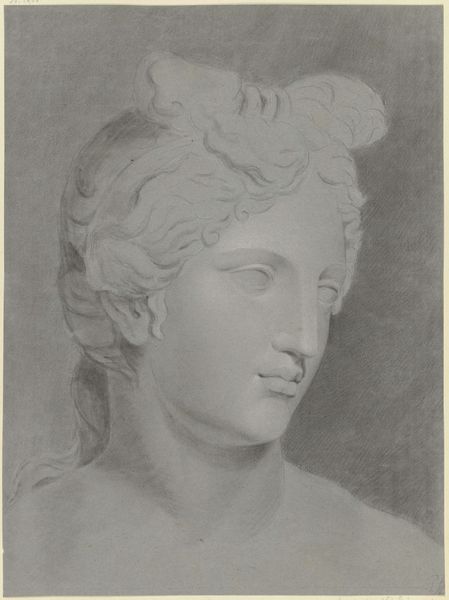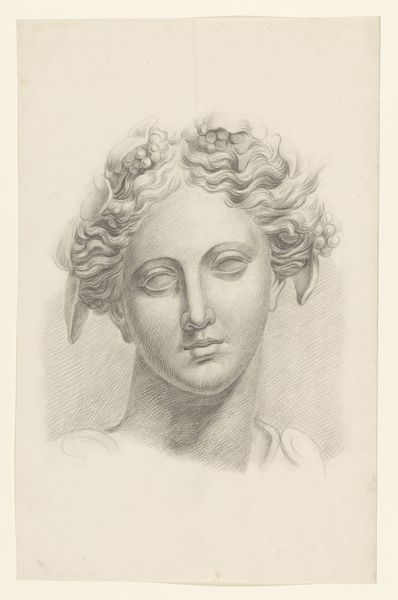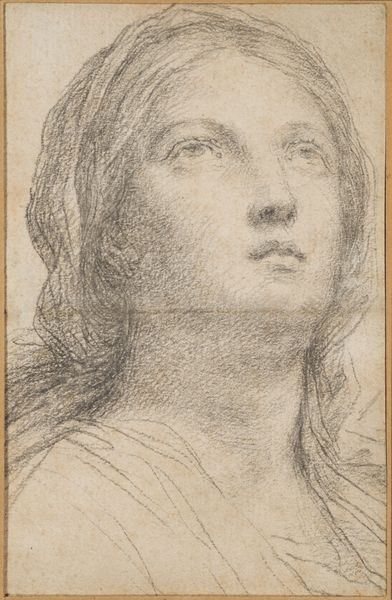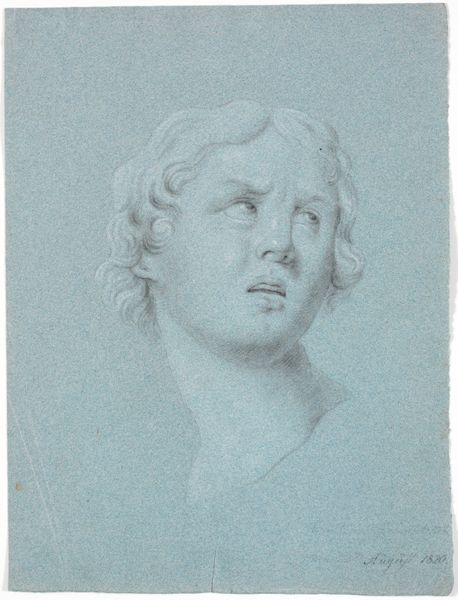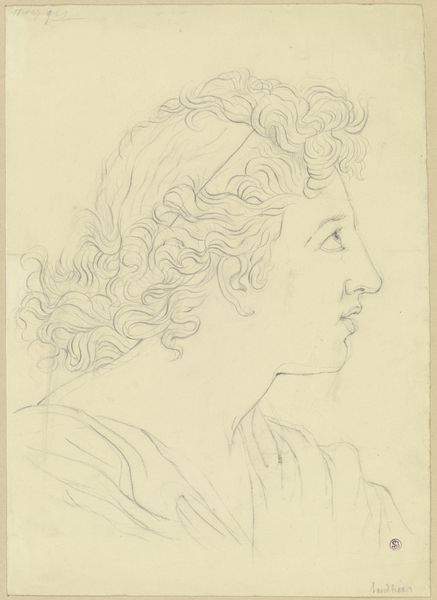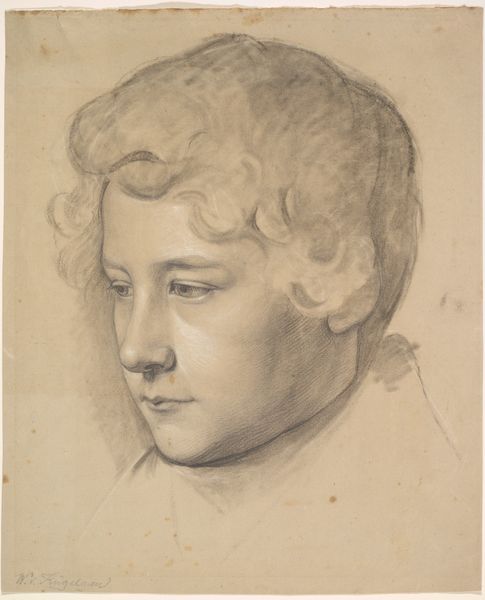
drawing, paper, pencil, chalk
#
portrait
#
drawing
#
figuration
#
paper
#
romanticism
#
pencil
#
chalk
#
portrait drawing
Copyright: Public Domain
Curator: This drawing, located in the Städel Museum, is entitled "Young man, looking up," by Marie Ellenrieder. It's rendered in pencil and chalk on paper. What strikes you first about this piece? Editor: Immediately, I'm drawn to the way the light seems to emanate from within the figure, contrasting the tangible feel of the paper with the almost ethereal quality of the gaze. It feels intensely romantic, and even a bit melancholy. Curator: Ellenrieder was associated with the Nazarenes, a group of Romantic artists interested in spirituality, simple living, and a return to honest German artmaking. Their influence is clear here; one can see this return to traditional methods reflected in the precise draftsmanship. How do you see these processes reflected here? Editor: The emphasis on line work and shading to model the face, clearly reveals this hand craftsmanship you speak of, contrasting mass production and industrial processes of the time. There is such deliberate mark-making involved with portraits like this. How might Ellenrieder's own experience as a woman artist have shaped the choice to create a drawing like this? Curator: Excellent point! The Nazarenes often sought religious or morally uplifting subject matter. Given the restrictions placed on women artists at the time, especially regarding painting historical or mythological scenes, portraiture, particularly drawings like this on paper, allowed for a kind of professional artistic activity that sidestepped some of those limitations. These were cheaper materials for producing images for study or private sale. Editor: So it’s not just about representing a face, but also a conscious choice about accessibility, labor, and perhaps even a silent critique of the art world’s expectations. It makes you consider what was deemed appropriate material or artistic labour for the artist. Curator: Precisely! It's fascinating to consider these works in light of the materials, the studio system, and how artists like Ellenrieder navigated that landscape. Editor: Yes, the materiality reveals so much. It goes beyond just representing an image; it also speaks to the economic and social forces at play in the art world.
Comments
No comments
Be the first to comment and join the conversation on the ultimate creative platform.
